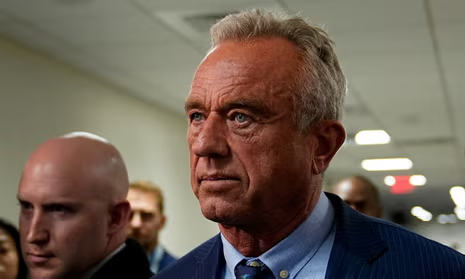President Donald Trump has been actively working to streamline government operations and cut costs, a mission that has faced legal challenges but also achieved successes. A significant victory was recently scored when a federal judge reinstated the administration’s federal employee buyout offer. The judge ruled that the group “Democracy Forward,” which had sued on behalf of labor unions, lacked the standing to contest the buyout program.
U.S. District Judge George O’Toole had previously paused the enforcement of a deadline for federal workers to accept the “Fork in the Road” offer. On Wednesday, he decided there was no justification to extend the deadline, rejecting the plaintiffs’ request to keep the program open beyond Wednesday evening. The judge did not address the legality of the offer itself but stated that the plaintiffs were not directly affected by the directive.
Judge O’Toole wrote that the plaintiffs’ claims of potential resource diversion and reputational harm were insufficient grounds to challenge the policy. He stated, “The unions do not have the required direct stake in the Fork Directive, but are challenging a policy that affects others, specifically executive branch employees.” He emphasized that affected employees could pursue claims through administrative channels.
Following O’Toole’s decision, the government is expected to start processing the resignations of federal employees who accepted the buyout offer. This program allowed around 2 million federal workers to resign immediately while still receiving salary and benefits for about eight months. Employees who declined the offer might face changes in their work conditions, including mandatory in-office presence.
A representative from the Office of Personnel Management expressed satisfaction with the ruling, highlighting the program’s thoughtful design and the benefits it offers federal workers. Despite this victory, legal challenges continue, with a new lawsuit from a Treasury Department employee union questioning the plan’s legality. The administration remains determined to push forward with its reforms.
According to a senior Trump administration official, approximately 75,000 federal employees have opted for the buyout offer, accounting for nearly 3.75% of the federal workforce. The administration had hoped for a participation rate between 5 and 10% to facilitate its sweeping changes. It is likely that more strategies will be employed to reach these targets.
The buyout initiative is part of President Trump’s broader agenda to implement significant changes within the federal workforce. The administration aims to increase efficiency and reduce costs by encouraging voluntary resignations. This approach is seen as a way to reshape government operations and align them with conservative principles.
Trump’s efforts to reform the federal government reflect a commitment to reducing bureaucracy and enhancing productivity. His administration is focused on creating a leaner, more efficient government structure. These initiatives resonate with the political ideology of leaders like Ronald Reagan and Barry Goldwater, who prioritized limited government and fiscal responsibility.
The ruling by Judge O’Toole underscores the complexities involved in implementing such large-scale reforms. Legal battles are expected as unions and other groups continue to challenge the administration’s plans. However, the administration remains steadfast in its efforts to advance its agenda.
As the buyout program proceeds, the administration will likely continue to evaluate its impact and effectiveness. The goal is to achieve a more streamlined federal workforce that can better serve the American public. This initiative is just one aspect of a broader strategy to transform government operations.
The Trump administration’s approach emphasizes accountability and performance within the federal workforce. By offering financial incentives for voluntary resignations, the administration hopes to create a more dynamic and adaptable government. These changes are intended to foster a culture of excellence and innovation.
The buyout offer represents a strategic move to address the challenges of managing a large federal workforce. It is part of a comprehensive effort to modernize government functions and improve service delivery. The administration is committed to ensuring that the federal government operates efficiently and effectively.
The support for these reforms reflects a desire for a government that is responsive to the needs of its citizens. The administration’s initiatives are aligned with conservative values that prioritize individual responsibility and fiscal prudence. These principles guide the ongoing efforts to reshape the federal workforce.
As legal challenges continue, the administration remains focused on achieving its objectives. The buyout program is a critical component of its strategy to reform government operations. The administration is determined to navigate the complexities of these changes and achieve lasting improvements.
The federal workforce buyout program is an example of the Trump administration’s commitment to transformative change. By encouraging voluntary resignations, the administration seeks to create a more efficient and effective government. These efforts are part of a larger vision to enhance government performance and accountability.
The outcome of these initiatives will have a lasting impact on the federal workforce and government operations. The administration’s commitment to reform is driven by a desire to create a more efficient and responsive government. These changes are essential to fulfilling the administration’s vision for a better government.




Time to get rid of all Public Unions.
They only benefit the corrupt Democrat Establishment Elite Party and are NOT in the Public interest.